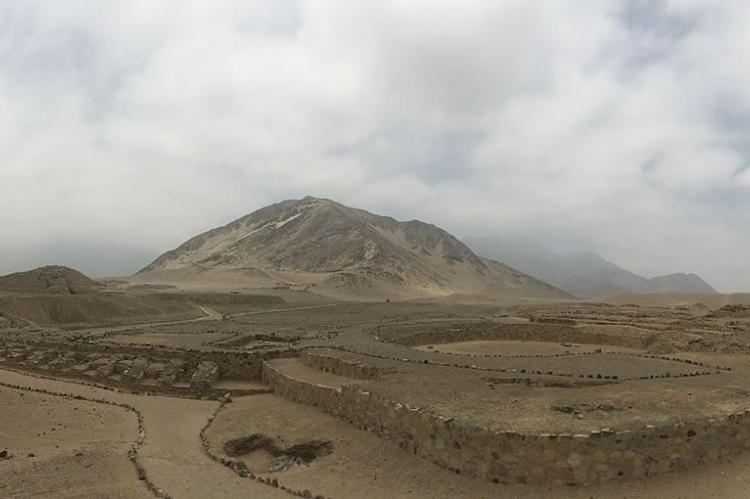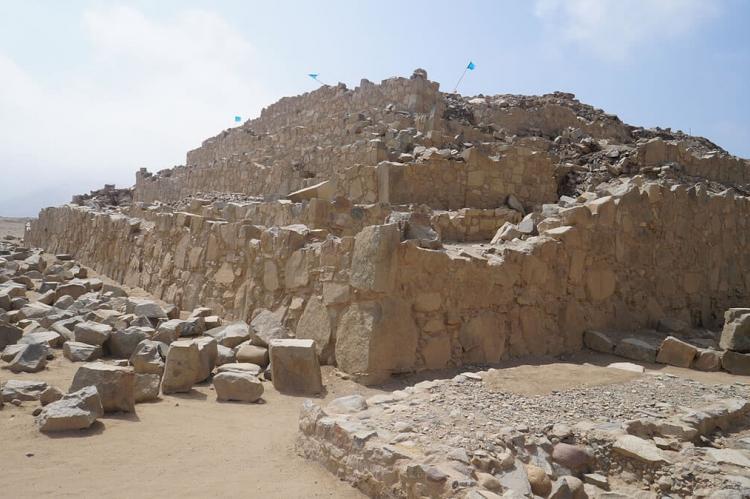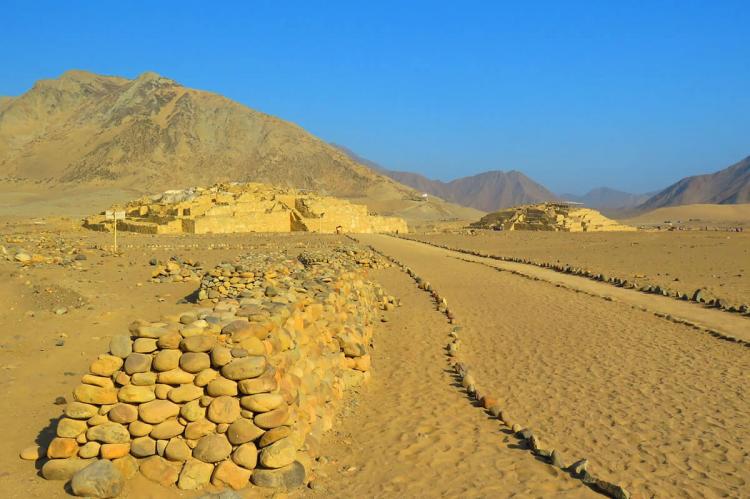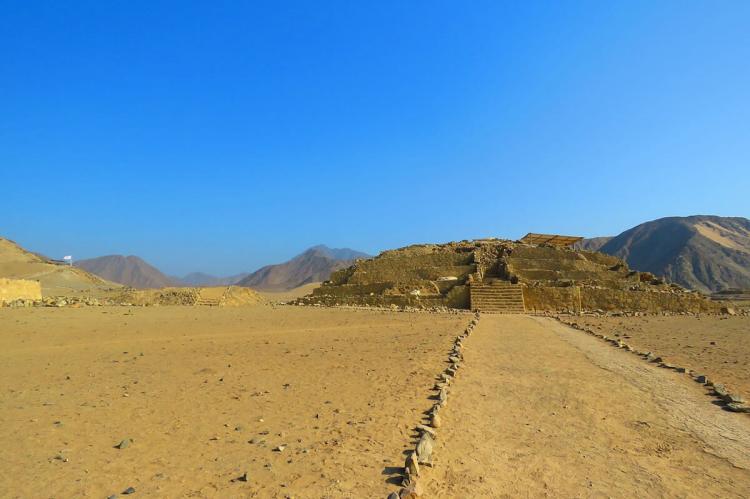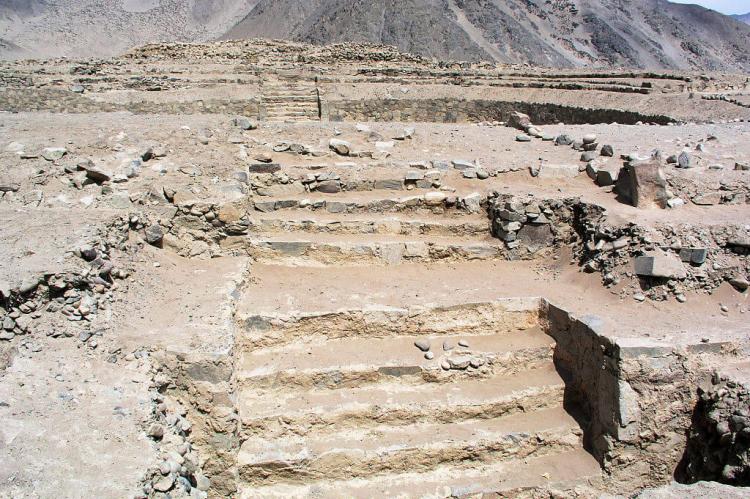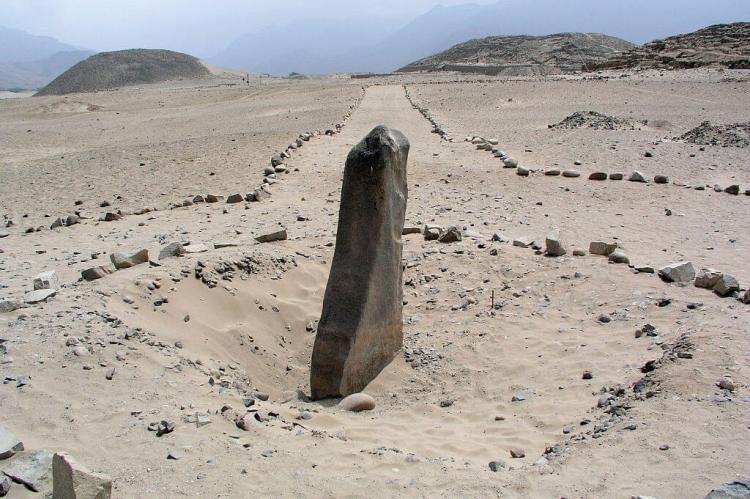Caral-Supe: The Birthplace of Andean Civilization
The Sacred City of Caral-Supe, known as Caral, is an ancient archaeological marvel that offers profound insights into the origins of civilization in the Americas. Situated on a desert terrace overlooking Peru's lush Supe River Valley, this 5000-year-old site was declared a UNESCO World Heritage Site.
The Sacred City of Caral-Supe: Cradle of Civilization in the Americas
The Sacred City of Caral-Supe, commonly known as Caral, is an ancient archaeological marvel that offers profound insights into the origins of civilization in the Americas. Situated on a desert terrace overlooking Peru's lush Supe River Valley, this 5000-year-old site spans 626 hectares (1,546 acres) and was declared a UNESCO World Heritage Site in 2009. Caral is celebrated not only for its antiquity but also for its advanced sociopolitical organization and architectural sophistication. As the most significant urban center of the Norte Chico civilization, Caral represents the earliest known example of a complex society in the Americas, setting the stage for the later development of Andean civilizations.
Historical and Geographical Context
Location and Environment
Caral is located in the Supe Valley, near the modern town of Caral, approximately 182 kilometers (113 miles) north of Lima and 23 kilometers (14 miles) from the coast. The site sits 350 meters (1,148 feet) above sea level, offering a strategic vantage point over the fertile valley below. This location was ideal for sustaining a burgeoning urban center in the Late Archaic Period of the Central Andes, dating from the 26th to the 20th century BC.
The broader Norte Chico civilization, of which Caral was the most prominent center, developed in a region characterized by arid coastal plains intersected by river valleys that provided the necessary resources for agriculture and settlement. Despite the harsh desert environment, the civilization flourished by utilizing irrigation and maritime resources, creating a sustainable economic foundation.
Significance and Discovery
Caral is the oldest known urban center in the Americas, reflecting the rise of early civilization in the region. Archaeologist Ruth Shady first excavated it in the late 20th century. The discovery dramatically altered our understanding of pre-Columbian history. It revealed that complex societies had emerged in the Andes far earlier than previously believed. The Norte Chico civilization, with Caral at its core, predated the Maya, Aztecs, and even the Olmec in Mesoamerica, making it a pivotal chapter in human history.
Architectural and Sociopolitical Achievements
Urban Design and Monumental Architecture
Caral's architectural design is both impressive and indicative of a highly organized society. The city features monumental stone and earthen platform mounds, sunken circular courts, and an intricate layout that suggests careful urban planning. These structures exemplify the city's advanced construction techniques and its inhabitants' architectural prowess. Among the most notable features are six large pyramidal structures, the largest of which, the Great Pyramid of Caral, stands nearly 29 meters (95 feet) tall. These pyramids likely served religious and administrative functions, reinforcing the notion that Caral was a ceremonial and political hub.
The monumental nature of Caral's architecture is characteristic of the broader Norte Chico civilization, which developed large-scale urban centers along Peru's northern coast. Sites such as Aspero, Vichama, and Bandurria display similar construction techniques, highlighting a shared cultural and political framework across the civilization.
Quipu and Recording Systems
One of the most significant discoveries at Caral is the presence of a quipu, a knot-based recording device used by Andean civilizations, including the later Inca. While the exact function of quipus in Norte Chico society remains uncertain, their presence suggests an early form of administrative and record-keeping systems. This indicates that Caral's leaders managed economic and political affairs in a sophisticated manner, further reinforcing its role as a complex society.
Social and Cultural Aspects
Ceremonial and Religious Significance
The layout of Caral, including its pyramidal structures and elite residences, reveals a city deeply rooted in ceremonial and religious practices. The presence of sunken circular plazas suggests that public rituals and gatherings were an essential part of social life. These elements suggest a powerful religious ideology that was central to the city's governance and social structure, likely overseen by a priestly elite.
Throughout the Norte Chico region, the emphasis on monumental construction with a religious focus suggests that these early societies were theocratic rather than militaristic. The ruling class may have derived its authority from its role as an intermediary between the people and the gods, a characteristic seen in later Andean civilizations.
Peaceful Society
Remarkably, no evidence of warfare has been found at Caral or other major Norte Chico sites. The absence of battlements, weapons, or mass graves indicative of conflict suggests that Caral was a society focused on commerce, ritual, and cultural exchange rather than military conquest. This peaceful nature is further supported by the discovery of musical instruments, such as 32 flutes made from condor and pelican bones and 37 cornets made from deer and llama bones. These artifacts indicate a society that valued artistic and cultural expression.
The lack of warfare is unusual among early civilizations, many of which expanded and maintained power through military means. Instead, the Norte Chico civilization appears to have been sustained through economic and religious structures, possibly functioning as a network of allied city-states rather than a centralized empire.
Artifacts and Burials
Among the intriguing finds at Caral is the burial of a baby wrapped and adorned with a necklace of stone beads, which suggests a society that values ritual and symbolic expressions. Such burials provide insights into the social and cultural practices of the Caral people. Additionally, textile fragments, fishing nets, and carved artifacts offer a glimpse into daily life and the technological advancements of the Norte Chico civilization.
Broader Impact and Legacy
Influence on Surrounding Regions
Caral's influence extended throughout the Supe Valley and beyond, impacting the development of other settlements. The architectural and sociopolitical innovations pioneered by the Norte Chico civilization set a precedent for future Andean cultures. Later civilizations, including the Chavín, Moche, and Inca, inherited and expanded upon many aspects of Norte Chico society, including urban planning, ceremonial architecture, and economic organization.
The Norte Chico civilization's reliance on irrigation-based agriculture, maritime resources, and large-scale public works established a foundation that would shape the trajectory of Andean civilization for millennia. This early culture is responsible for the use of quipus, centralized planning, and monumental construction, underscoring its historical significance.
Modern Recognition and Conservation
Since its declaration as a UNESCO World Heritage Site, Caral has been recognized globally for its historical importance. Ongoing archaeological research and conservation efforts aim to preserve this invaluable site for future generations. The study of Caral and the Norte Chico civilization continues to reshape our understanding of early complex societies, highlighting the independent development of civilization in the Americas.
Conclusion
The Sacred City of Caral-Supe is a testament to the ingenuity and complexity of early Andean civilization. As the most significant center of the Norte Chico civilization, Caral represents the earliest known urban society in the Americas, demonstrating remarkable advancements in architecture, administration, and culture. Its well-preserved structures, sophisticated urban planning, and evidence of a peaceful, commerce-driven society provide a unique glimpse into the ancient world. The legacy of Caral and the Norte Chico civilization continues to inspire and inform our understanding of human history and cultural development.
